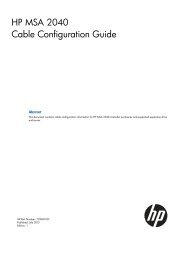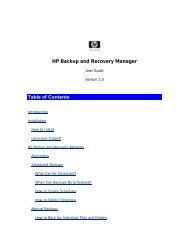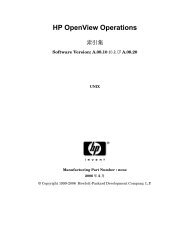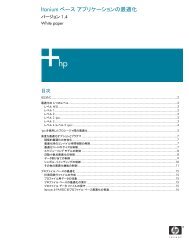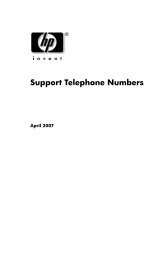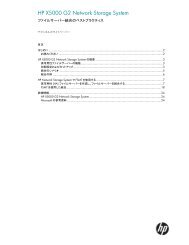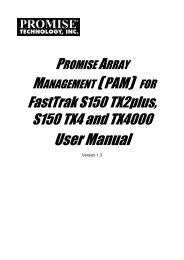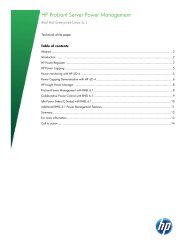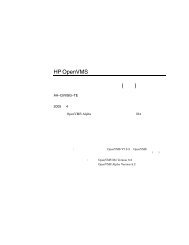HP ProCurve Wireless Access Point 420 - Hewlett Packard
HP ProCurve Wireless Access Point 420 - Hewlett Packard
HP ProCurve Wireless Access Point 420 - Hewlett Packard
You also want an ePaper? Increase the reach of your titles
YUMPU automatically turns print PDFs into web optimized ePapers that Google loves.
<strong>Access</strong> <strong>Point</strong> Configuration<br />
Modifying Radio Settings<br />
Not e If you are using the worldwide product, J8131A, before you can configure the<br />
radio settings the Country Setting must be set using the CLI. See “Using the<br />
CLI to Set the Country Code” on page 5-41.<br />
5-38<br />
The web interface enables you to modify these parameters:<br />
■ Working Mode: Selects a standard operating mode for the access point.<br />
• b & g mixed mode: Both 802.11b and 802.11g clients can communicate<br />
with the access point. This is the default configuration.<br />
• g only mode: Only 802.11g clients can communicate with the access<br />
point.<br />
• b only mode: Both 802.11b and 802.11g clients can communicate with<br />
the access point, but 802.11g clients can only transfer data at 802.11b<br />
standard rates (up to 11 Mbps).<br />
■ Radio: Enables radio communications on the access point.<br />
■ Radio Channel: The radio channel that the access point uses to communicate<br />
with wireless clients. When multiple access points are deployed in<br />
the same area, be sure to choose a channel separated by at least five<br />
channels to avoid having the channels interfere with each other. You can<br />
deploy up to three access points in the same area (for example, channels<br />
1, 6, 11).<br />
■ Auto Channel Select: Enables the access point to automatically select<br />
an unoccupied radio channel.<br />
■ Transmit Power: Adjusts the power of the radio signals transmitted from<br />
the access point. The higher the transmission power, the farther the<br />
transmission range.<br />
■ Maximum Station Data Rate: The maximum data rate at which a client<br />
can connect to the access point. The maximum transmission distance is<br />
affected by the data rate. The lower the data rate, the longer the transmission<br />
distance.<br />
■ Beacon Interval: The rate at which beacon signals are transmitted from<br />
the access point. The beacon signals allow wireless clients to maintain<br />
contact with the access point. They may also carry power-management<br />
information.<br />
■ Data Beacon Rate: The rate at which stations in sleep mode must wake<br />
up to receive broadcast/multicast transmissions.<br />
Known also as the Delivery Traffic Indication Map (DTIM) interval, it<br />
indicates how often the MAC layer forwards broadcast/multicast traffic,<br />
which is necessary to wake up stations that are using Power Save mode.<br />
The default value of 2 indicates that the access point will save all broadcast/multicast<br />
frames for the Basic Service Set (BSS) and forward them



